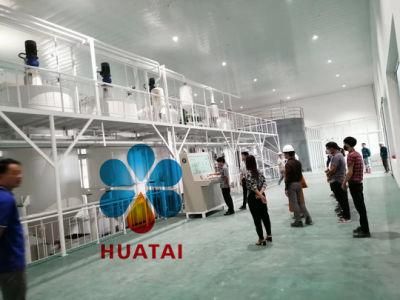
Crude Oil Refining Production Line
Henan Huatai Intelligent Equipment Group.- After-sales Service:Supply
- Warranty:1 Year
- Structure:Horizontal
- Press Series:Oil Refining
- Voltage:Cusomization
- Transport Package:Shipping by Container
Base Info
- Model NO.:Huatai
- Specification:Depends on capacities
- Trademark:Huatai
- Origin:China
- HS Code:8479200000
- Production Capacity:50000 Sets,Year
Description
Basic Info.
Model NO. Huatai Specification Depends on capacities Trademark Huatai Origin China HS Code 8479200000 Production Capacity 50000 Sets/YearProduct Description
All materials which are recovered through solvent extraction have an effect on crude oil quality. In addition to these effect, there are other factors involving crude oil storage, handling and transport. So it will need the oil refining process to get rid of the harmful substances. This process is the oil refining process.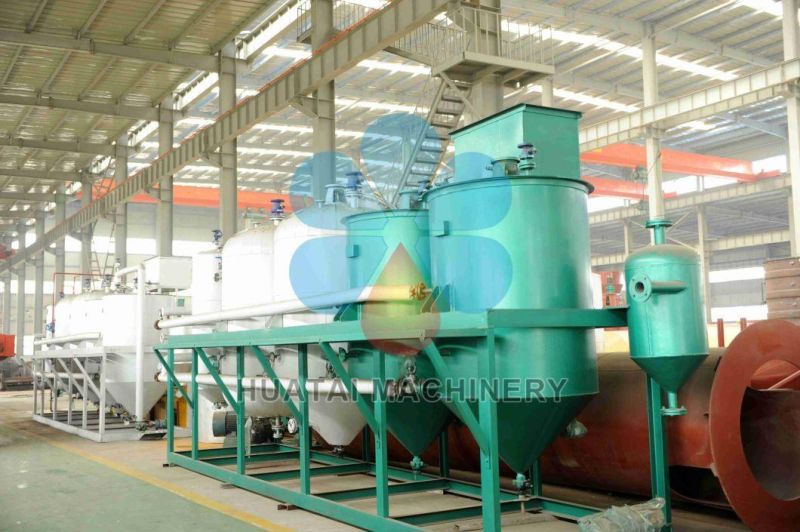
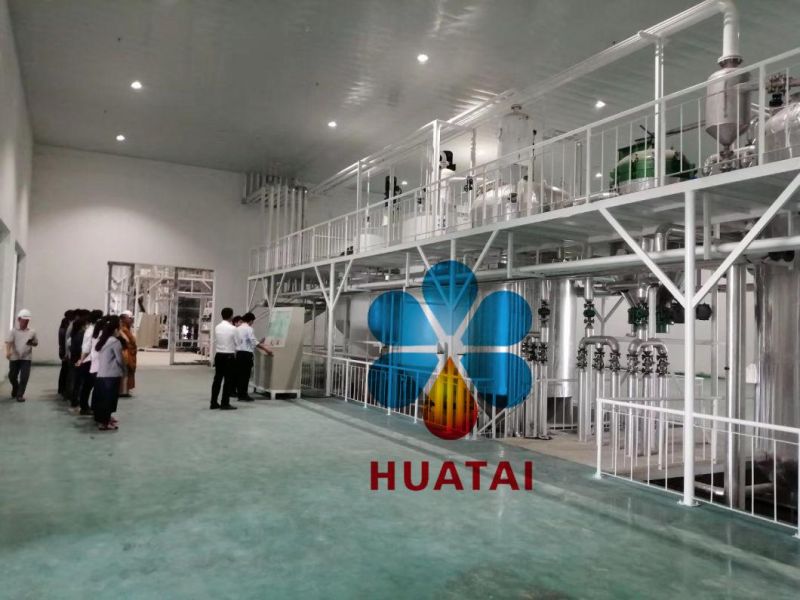 The whole process of the crude oil refining production line:
The whole process of the crude oil refining production line:Degumming
The process of degumming is based on the process for removal Phosphatides, which is also called gums. The common usage refers to the array of Phosphatides present in mostly all crude Oil, although all crude vegetable oils contain Gums. Degumming of oil is done to prepare degummed oil for caustic & physical refining.Water & Phosphoric acid added to crude oil to hydrate the phosphatides& thus prepare them for removal by gravitational forces or centrifugation. The centrifugation type is used in the medium process.The hydrable phosphatides (HP) are readily removed by the addition of water & Phosphoric Acid, whereas the Non Hydrable Phosphotides (NHP) are relatively unaffected by water & tend to more oil soluble (i.e. remain in oil phase to remove the same) some quantity of caustic may be given to remove the same (that is called partially Neutralize with dilute lye (Hydration Water). Deep degumming utilizes a reagent like acid to chilate Iron, Calcium and Magnesium away from NHP Complex once the Iron, Calcium and Magnesium are removed from NHP Complex Phosphatides become hydrable.Enzymatic degumming also utilizes on enzyme to modify the NHP into hydrated gums.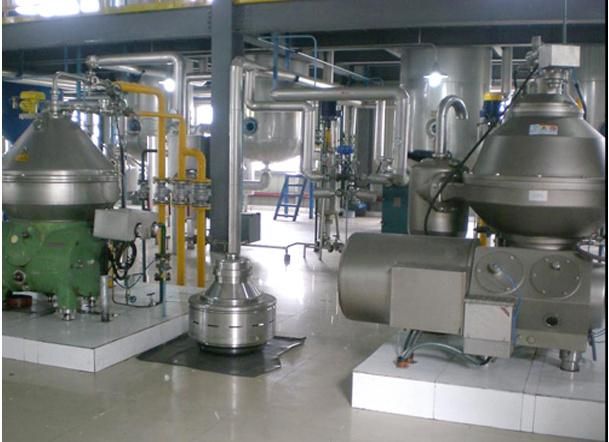 Neutralization
Neutralization
Neutralization or caustic refining process can be occuring for crude oil, crude degumming oil or a mixture. The long -mix caustic refining system is recommended. Less caustic use lower neutral oil less and lower the cost of Caustic and soap stock with the use of two water phases, it is possible to produce good refined oil with low 'P' content and low soap content. The reaction involved in degumming & alkali refinery is as follows: Phospholipids (HP) + Water = Hydrated gums Phospholipids (NHP) + Acid or Alkali = Hydrated gums Metal/phospholipids complex + Acid = Hydrated metal gums Free Fatty acid + Alkali = Soap
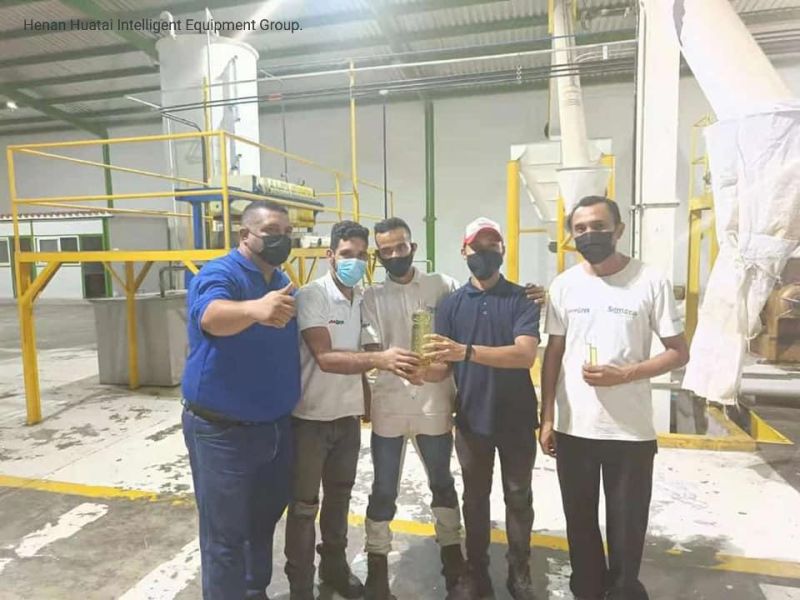 Bleaching
BleachingBleaching step is involved to remove or reduce the levels of the following in Neutralized oil : Pigment (Color) Phosphatides Oxidation Soap Traces metals In this process approach to the process for bleaching has been to treat it in terms of colour, reduction to however, barring the sporadic and infrequent occurrence of high chlorophyll levels. Any soap or phosphatides present in the neutralized oil will require absorption, by some portion of the earth; this requires more earth than what we need for the basic adsorption treatment. Neutralize oil generally contains 5-10 ppm phosphorous (P) and 10-30 ppm soap. The economic benefit is providing clean feed stock for bleaching in minimal earth use this means less earth cost, less chance of hydrolysis cost, longer filter cycles less neutral oil loss, less spent earth which require disposal.
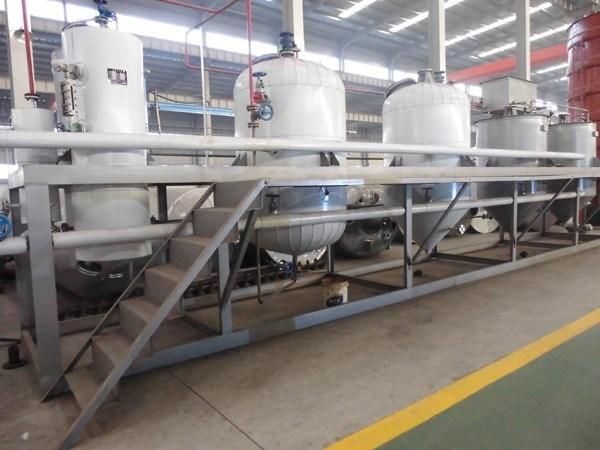 Deodorization
DeodorizationThe Deodorization is the last process in processing except for crystallization, tempering and packing. Deficiencies in any of the step during process cannot be overcome by deodorization step. Deodorization is a steam stripping process wherein a good quality steam, generated from derated and properly treated feed water, under low absolute pressure and sufficiently high temperature to vaporized the FFA and odoriferous compounds and carry these volatiles away from feed stock.
